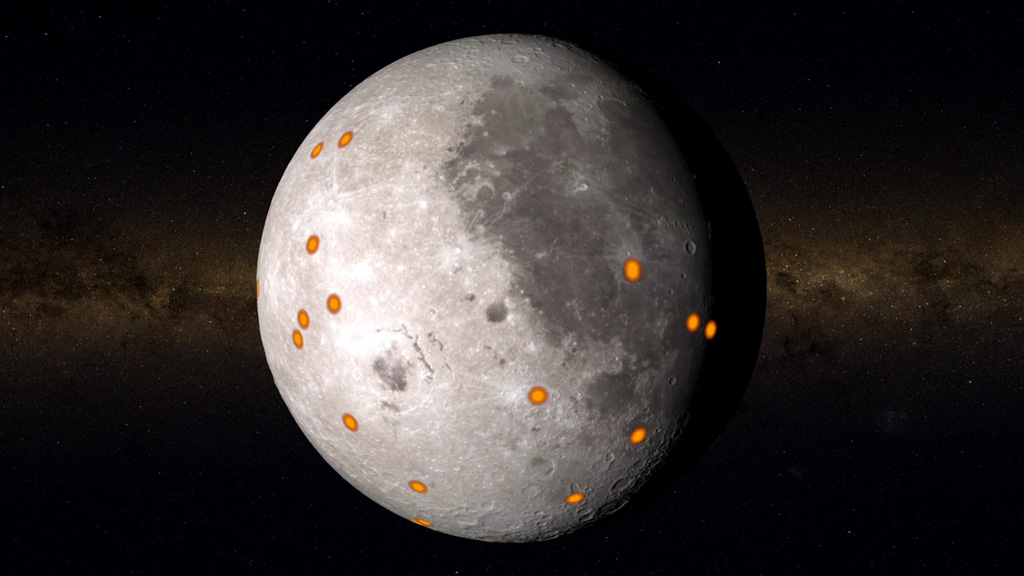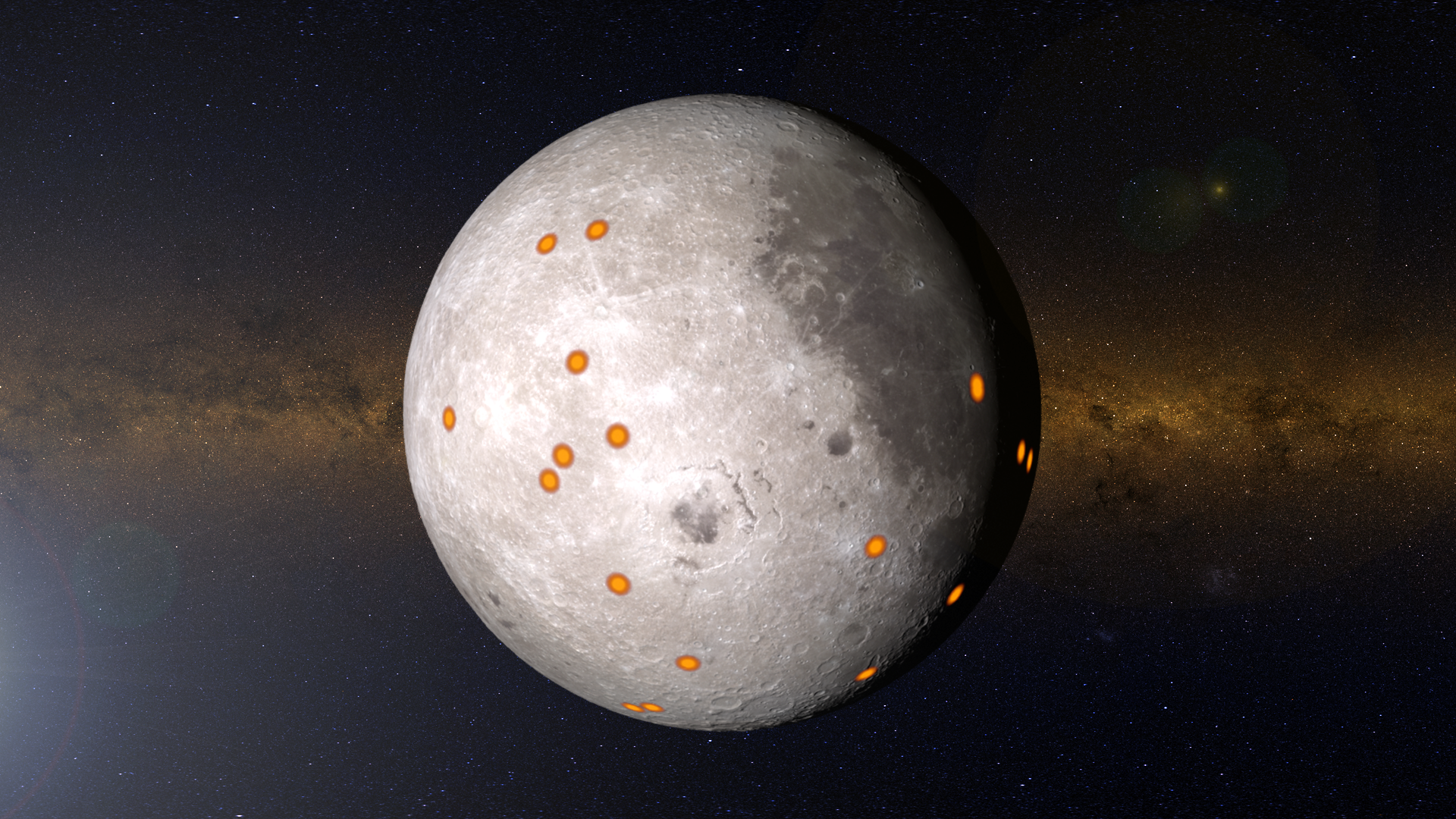March 17, 2013 Lunar Impact Forms a New Crater
Artist's conception of the March 17, 2013 lunar impact as seen from near the impact site in Mare Imbrium.
This video is also available on our YouTube channel.
On March 17, 2013, a NASA telescope that monitors the night side of the Moon recorded a bright flash in Mare Imbrium, at about 21°N, 24°W. The flash was one of the brightest ever recorded, and it was caused by the impact of a meteoroid estimated to be roughly a foot (30 to 40 cm) wide and just under a hundred pounds (40 kg), hitting the Moon at 60,000 miles per hour (25 km/sec).
A few months after the impact, the Lunar Reconnaissance Orbiter (LRO) camera team (LROC) found the crater formed by the impact. They compared LRO images taken before and after the impact and found a new crater 18 meters (60 feet) wide, with rays of ejecta that extend several kilometers.
Artist's conception of the March 17, 2013 lunar impact as seen from Earth.
Video of the March 17 impact taken by the lunar impact monitoring program at NASA Marshall Space Flight Center, registered to a visualization of the Moon as it appeared at the time of the impact. The video has been slowed by a factor of 3.

Before and after images from the Lunar Reconnaissance Orbiter narrow-angle camera showing the new crater formed by the March 17 impact. This pair is at the original resolution of roughly 1.3 meters per pixel. The before image is cropped from M183689789L taken February 12, 2012. The after image is from M1129645568L taken July 28, 2013.

Before and after images from the Lunar Reconnaissance Orbiter narrow-angle camera showing the new crater formed by the March 17 impact, centered on the crater and magnified 4x from the original resolution of roughly 1.3 meters per pixel. The before image is cropped from M183689789L taken February 12, 2012. The after image is from M1129645568L taken July 28, 2013.
An animated illustration of a few of the new crater sites found by the Lunar Reconnaissance Orbiter camera team.
For More Information
Credits
Please give credit for this item to:
NASA's Scientific Visualization Studio
-
Animator
-
Ernie Wright
(USRA)
-
Ernie Wright
(USRA)
-
Producer
- Dan Gallagher (USRA)
-
Scientists
- Mark Robinson (Arizona State University)
- John Keller (NASA/GSFC)
-
Project support
- Laurence Schuler (ADNET Systems, Inc.)
- Ian Jones (ADNET Systems, Inc.)
Series
This page can be found in the following series:Datasets used
-
DEM (Digital Elevation Map) [LRO: LOLA]
ID: 653 -
DE421 (JPL DE421)
ID: 752Planetary ephemerides
This dataset can be found at: http://ssd.jpl.nasa.gov/?ephemerides#planets
See all pages that use this dataset -
WAC 643nm High Sun Global Mosaic [LRO: LROC]
ID: 803
Note: While we identify the data sets used on this page, we do not store any further details, nor the data sets themselves on our site.
Release date
This page was originally published on Tuesday, March 17, 2015.
This page was last updated on Sunday, March 9, 2025 at 10:18 PM EDT.


